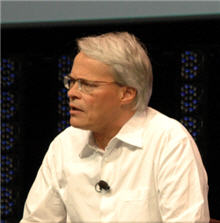SAP's parallel approaches to ERP


More importantly, features built into Business ByDesign will migrate to other SAP products, including the SAP Business Suite. "Business ByDesign will offer new business capabilities not in the Business Suite," Zencke said.
Zencke differentiated between the new ByDesign platform (SOA by design and "accelerated innovation") and the old platform (SOA by evolution). Business ByDesign is built completely out of services unlike Business Suite. "We have to succeed in evolution to extend [existing customers] without disruption and also enable radical innovation, and do them in parallel," Zencke said. "We will evolve existing customers in an incremental way with enhancement packages. The new business process platform is not designed for substitution, but you can run it in conjunction with the Suite. On top of them comes NetWeaver, as execution platform." Redmonk's James Governor, who was sitting next me, said SAP's notion of non-disruptive innovation would be like delivering babies without labor.
Features such as a business process repository and visual modeling environment, developed for Business ByDesign (formerly code-named A1S) over the last several years will be added to other products as enhancement packages. Zencke highlighted the model-driven nature of Business ByDesign (see below), which is based on NetWeaver 7.1 and provides a way for a business analyst, rather than hard core programmer, to go from modeling objects, services, business processes and orchestration to execution.
I asked Zencke when Business ByDesign would be generally available. "We have no one term for general availability," Zencke said. We have 25 live customers hosted in our beta center. We will have 100 by the end of the years, 1,000 the next year and 10,000 following that." It's a controlled roll out built on reference customers, he added.
"It will be increasingly difficult for SAP to maintain separation across the portfolio when Business ByDesign is the first place innovation will be delivered. For customers who want to be on the latest and greatest, and aren't lower mid-market, there will be some frustration and tough questions for SAP," said RedMonk's Governor said.
SAP CTO Vishal Sikka introduced NetWeaver 7.1, and telegraph features due next year, including enhancement packages that allow a selective install of new functionality based on a "switch network," and industry-focused enterprise services. NetWeaver has grown from 5,800 customers in April 2006 to more than 18,100 in June 2007, and the SAP Developer Network (SDN) has grown from 600,000 to 900,000 in a year, according to the company.
Sikka also previewed some new NetWeaver features, that will allow business process analysts with minimal programming expertise to visually model a business process that creates executable code (similar to what Business ByDesign can do). The NetWeaver process integration services is slated for the end of year. SAP has 200,000 member of its Business Process Expert community, but that is just a small start in getting IT and business to speak the same language. "If you believe in accelerated innovation, it must be more focused on knowledge management and sharing--the [individual] skill sets are not scalable," Zencke said.
See also: Jeff Nolan